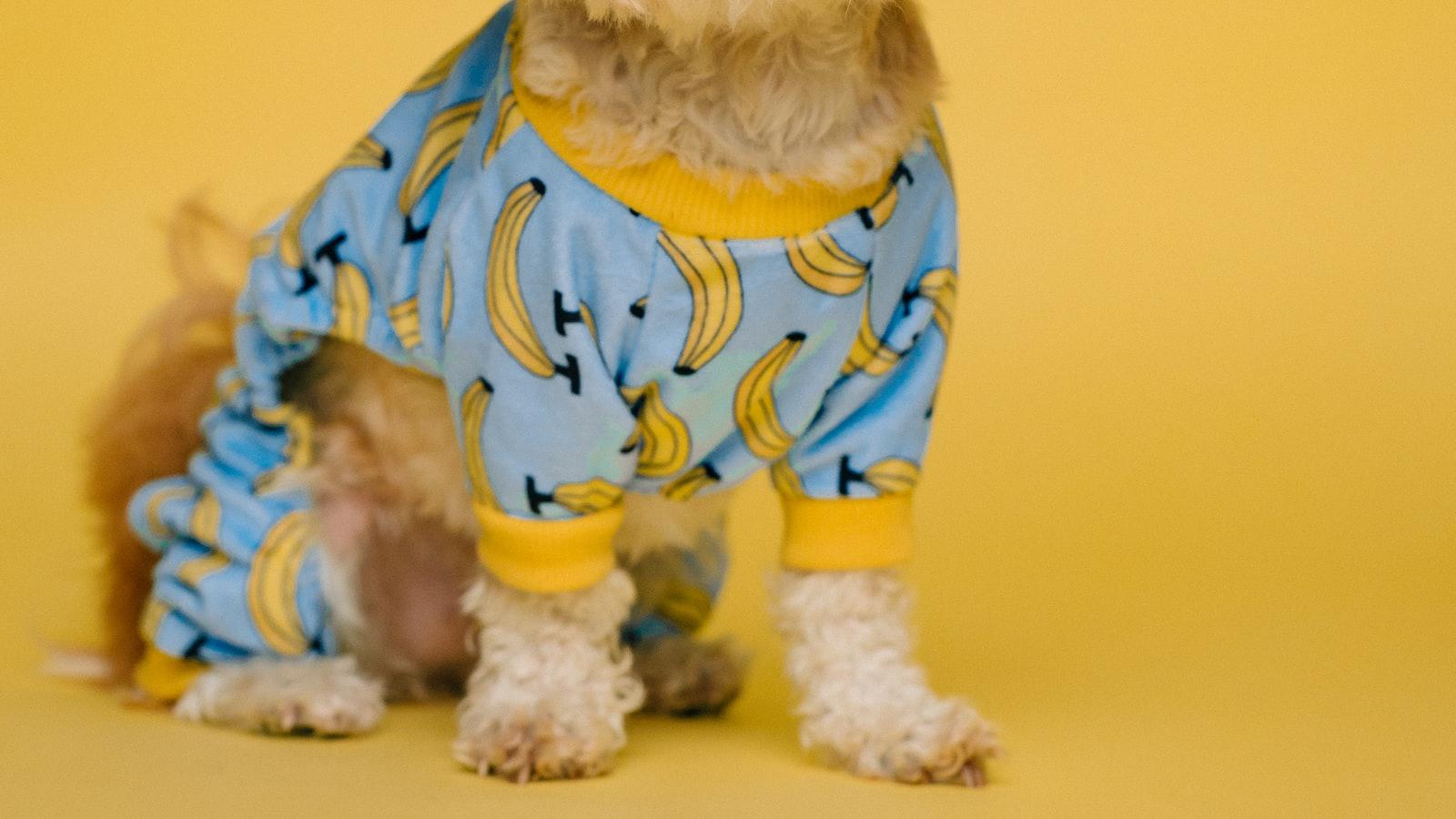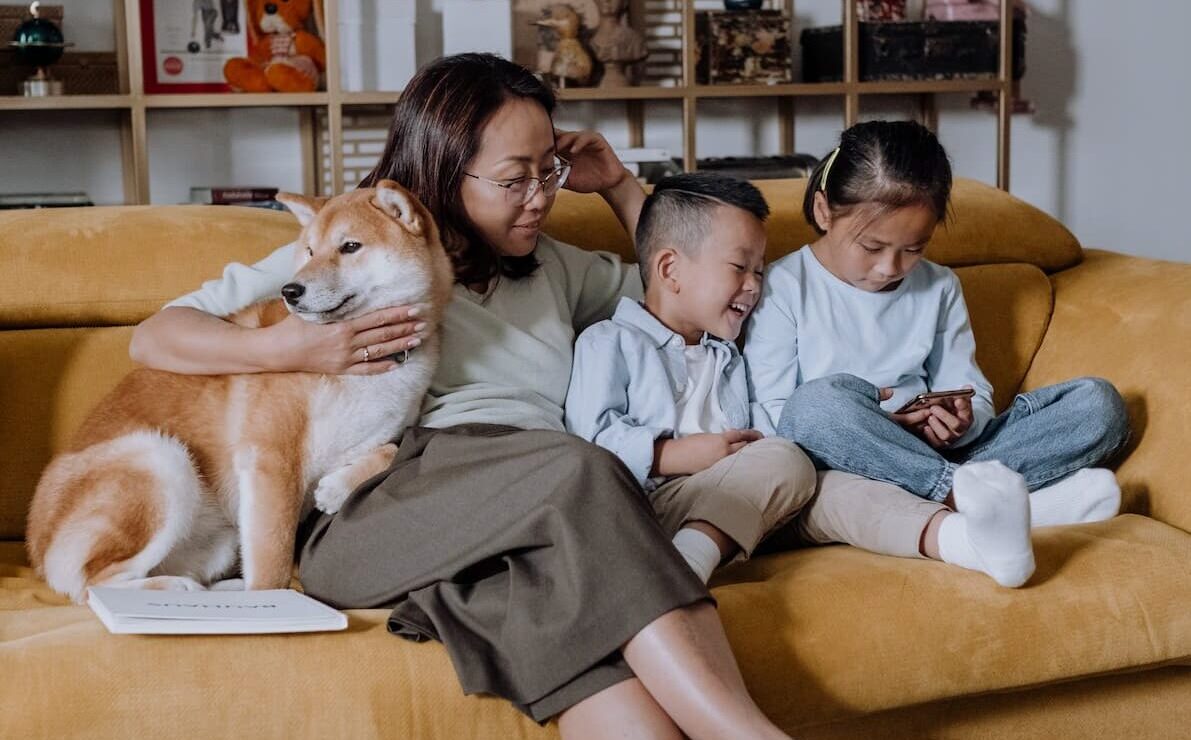Imagine this: you walk through the front door after a long and tiring day, feeling the weight of the world on your shoulders.
But just as your frown begins to deepen, a flurry of excitement greets you at the threshold — wagging tails, wagging tails everywhere!
Ah, the unconditional love of a dog — there’s truly nothing quite like it.
But have you ever wondered why our furry friends wag their tails with such fervor at the sight of their beloved humans?
Read on to find your answers.
Why Do Dogs Wag Their Tails When They See You?
Dogs are known for their wagging tails, and it’s an adorable sight that never fails to bring a smile to our faces.
But have you ever wondered why they wag their tails when they see you?
It turns out that a dog’s wagging tail is not just a simple gesture of happiness, but it is also a way for them to communicate with us and express a range of emotions:
1. Joy and Excitement
When a dog sees their beloved human, their tail starts wagging vigorously as if it’s about to take flight.
This enthusiastic tail wag is a clear sign of their uncontainable joy and excitement.
It’s their way of saying, “I’m so happy to see you!”
Consider this the ultimate display of affection.
The faster and wider the tail wag, the more thrilled your furry friend is to have you around.
2. Social Bonding
Dogs are highly social animals, and wagging their tails is also a way for them to communicate and build connections.
When they wag their tails, they are actually inviting you to interact with them, encouraging a bond between you.
It’s like their way of extending an invitation to play, cuddle, or simply spend time together.
So, when you see that wagging tail, don’t hesitate to reciprocate the affection and give them some well-deserved attention.
3. Emotional Signals
A dog’s wagging tail isn’t always an indication of happiness.
It can also convey a wide range of emotions.
For example, a slow and low tail wag usually signifies caution or uncertainty.
On the other hand, a stiffly wagging tail may indicate a mix of fear and aggression.
Decoding Different Wagging Styles
Now that you know that tail-wagging can be used to communicate different emotions, it is important that you understand the different wagging styles in order to better determine your pooch’s emotional state.
Pay close attention to the rest of your furry companion’s body language and context to better understand what they’re trying to tell you.
Let’s remember that dogs use their entire bodies to communicate, not just their tails:
1. Excitement and Happiness
When your pup frantically wags their tail from side to side, it’s a clear sign they are overjoyed to see you!
Their whole body may even wiggle with excitement.
It’s their way of communicating their joy and anticipation of spending time with you.
So, next time you come home and see your dog’s tail wagging like crazy, know that they are showering you with love and happiness.
2. Contentment and Relaxation
Sometimes, you may notice your furry companion gently wagging their tail from side to side in a relaxed manner.
This slow and steady wag typically signifies that your dog is content and at ease.
It’s a way for them to let you know that they are comfortable in your presence and feeling calm.
Remember, a relaxed tail wag is often accompanied by a relaxed body and a happy, serene expression.
3. Curiosity and Alertness
Dogs are naturally curious creatures, and their tail can serve as a barometer for their level of intrigue.
When your furry friend encounters something or someone unfamiliar, they may wag their tail cautiously or hold it stiffly upright.
This type of wag indicates that they are inquisitive and on high alert, trying to gather information about the new situation.
Pay attention to their body language and surroundings to better understand their specific tail-wagging signals.
Understanding your dog’s tail-wagging style is vital for interpreting their emotions accurately.
Always take into consideration their overall body language, including ear position, vocalizations, and facial expressions, to get a complete picture of how they’re feeling.
Remember, each dog is unique, and while some wag their tails with unbounded joy, others may have more subtle ways of expressing their feelings.
Tail Wagging Dos and Don’ts to Better Communication
Here are some tips on how to better communicate with your canine companion:
The Dos
Observe the context: The way a dog wags its tail can reveal a lot about their emotions and intentions.
A relaxed and loose tail wag usually means they are happy and friendly.
However, if the tail is held high, rigid, and wagging rapidly, it could indicate excitement or even aggression.
Pay attention to the overall body language of your dog to get a better understanding of what they are trying to communicate.
Encourage positive wagging: When your dog wags their tail in a relaxed manner, it’s a sign that they are feeling good and comfortable around you.
Shower them with praise, gentle petting, and treats to reinforce this positive behavior.
By doing so, you’ll be strengthening the bond between you and your furry companion.
The Don’ts
Don’t assume tail wagging means friendliness: While tail wagging is often associated with happiness and friendliness, it’s essential to approach a wagging dog with caution, especially if you’re unfamiliar with the animal.
A dog may wag its tail nervously or out of fear, which can potentially lead to aggression.
Always respect the dog’s boundaries and allow them to approach you on their terms.
Avoid punishment: If your dog wags their tail in response to a situation that you find undesirable, such as jumping on guests, it’s crucial not to punish them for their wagging.
Tail wagging is a natural instinctive behavior, and punishing your dog for it can confuse and distress them.
Instead, focus on redirecting their behavior with positive reinforcement training techniques.
By familiarizing ourselves with the dos and don’ts of tail wagging, we can become more attuned to our canine companion’s emotions and needs.
Remember, tail wagging is just one aspect of a dog’s complex communication system, and it’s important to consider it alongside other body language signals.
So the next time your dog wags their tail with joy, reciprocate their happiness and continue to build a loving and trusting relationship with your best friend.
FAQ
Q: Why do dogs wag their tails?
A: Dogs wag their tails primarily as a means of communication.
It’s their way of saying, “Hey there, I’m happy to see you!” or “I’m excited right now!”
A wagging tail is like a doggy-friendly handshake, conveying their emotions and intentions.
Q: Do all tail wags mean the same thing?
A: Not exactly.
A dog’s tail wag can express different emotions depending on how they wiggle it!
For example, if a dog holds its tail high and wags it vigorously, it often signifies joy or enthusiasm.
On the other hand, a low tail wag that’s more relaxed suggests a calm and content state.
Learning to interpret these subtle differences can give us a deeper understanding of our four-legged companions.
Q: Can dogs wag their tails when they’re sad or scared?
A: Absolutely!
While tail wagging is commonly seen as a sign of happiness, it doesn’t exclusively mean that.
Dogs may also wag their tails when they’re anxious, afraid, or even feel threatened.
It’s crucial to pay attention to their overall body language, including ears, posture, and facial expressions, to decipher what they’re truly feeling.
Q: Can humans communicate with dogs through tail wagging?
A: Surprisingly, humans can somewhat interact with dogs through tail wagging!
When we approach a dog, a tail wag can indicate their willingness to engage with us.
If the wag becomes more vigorous or accompanied by friendly vocalizations, they’re telling us that they’re thrilled about our presence.
It’s as if they’re shouting, “Yay, let’s have fun together!”
Q: Is tail wagging universal among all dog breeds?
A: Dogs all around the world wag their tails, but different breeds have various tail shapes, styles, and sizes.
Some breeds have long, fluffy tails that sway gently, while others have short, tightly curled tails that wag vigorously.
Despite these differences, tail wagging remains a universal language among dogs, allowing them to communicate and understand each other.
Q: Are there any other ways dogs communicate besides wagging their tails?
A: Absolutely!
Dogs have a rich repertoire of communication tools beyond wagging their tails.
They use their body posture, facial expressions, vocalizations, and even their sense of smell to convey messages to both humans and other canines.
Understanding this diverse communication system can help us build stronger bonds with our furry friends.
Q: So, the next time a dog wags its tail at me, what should I keep in mind?
A: When you encounter a wagging tail, remember that it usually signifies a positive emotional state.
However, it is essential to observe the dog’s overall behavior to ensure they’re comfortable and approachable.
Respect their personal space and, if possible, seek permission from their owner before interacting with them.
Building trust and understanding is the key to forming beautiful connections with our tail-wagging friends!
Final Thoughts
From the tiniest Chihuahua to the mightiest Great Dane, tails are wagging all around the world as a universal expression of joy and excitement.
But what’s the science behind this tail-wagging phenomenon?
Well, it turns out that dogs use their tails as a means of communication, just like we use our hands to express our feelings.
It’s their unique way of saying, “Hey there! I’m thrilled to see you!”
Or sometimes, ”I’m sorry for chewing your favorite pair of shoes. Please don’t be mad!”
The wagging of a dog’s tail goes beyond simple excitement.
It also serves as a signal to other dogs and humans alike.
If a fellow furry companion approaches them with a wagging tail, it’s an invitation to play, a friendly greeting that says, “Let’s have a wag-tastic time together!”
But here’s where it gets interesting.
Not all tail wags are created equal.
The direction and speed of the wag can convey different messages.
If your dog’s tail is wagging high and wide, they’re likely overjoyed and bursting with happiness.
On the other paw, a slow and low wag might mean they’re feeling a bit cautious or unsure about the situation.
It’s like their own secret doggy language!
So the next time you see a dog wagging its tail enthusiastically, remember that it’s not just a simple gesture.
It’s a heartfelt expression of love, excitement, and a genuine bond.
Dogs have this incredible ability to make us feel special, loved, and appreciated, and their wagging tails are a reflection of that.














